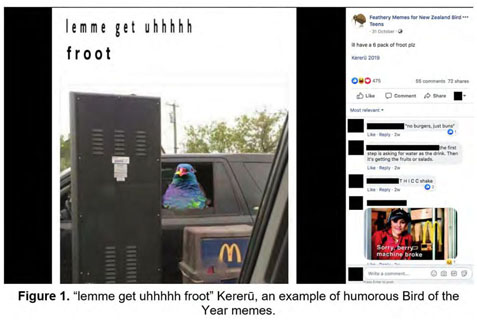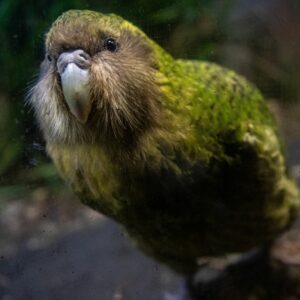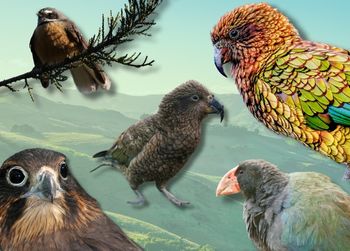Aotearoa’s favourite election is back; it’s time for Forest & Bird’s Bird of the Year competition. This year the stakes have been raised, with Aotearoa being asked to determine our Bird of the Century! Visit their website to review the candidates and make your vote. Voting opens 9am today, Monday 30 October!
One amazing aspect of Bird of the Year is that it always garners mass online engagement. The New Zealand Journal of Psychology published a fascinating paper on this phenomenon, titled ‘lemme get uhhhhh froot’: Internet memes for consciousness-raising in Aotearoa’s Bird of the Year conservation campaign. Bird of the Year memes have become an annual pastime that truly seems to grip the nation. This paper explores how memes from past Bird of the Year campaigns are an example of combining humour and activism online. New Zealanders are encouraged to not just vote, but create campaigns for their bird of choice. As well as everyday New Zealanders, politicians and celebrities are also known to run campaigns for their favourite birds, with the especially passionate creating “dedicated social media accounts, sharing memes to support their candidate and oppose rivals.” In their research, they found that “memes mobilised humour and fear, cultural ideas about what it means to be a New Zealander, and information about how to conserve endangered species.”, while also critiquing themselves through self-referential humour that asks “questions about the potentials and pitfalls of online engagement.” This paper suggests that the “playful-serious nature of memes can provide a vehicle for speaking difficult truths in ironic ways.” The plight of our native birds certainly is a difficult truth, with “more than 80% of New Zealand’s native bird species are threatened or at risk and 23 species face an immediate high risk of extinction (Department of Conservation, n.d.a; Parliamentary Commissioner for the Environment, 2017).”

Sometimes a bird’s meme power is too much that it makes it more difficult to spread awareness for other, less loved and potentially more endangered, species. In 2022, crowd favourite the kākāpō was removed from the voting ballot after winning the competition two years in a row. The Guardian elaborates, it was “conspicuously absent, amid concerns that its continued dominance could divert the spotlight from less charismatic candidates.” As this controversial decision took flight around the internet, Forest & Bird reassured Aotearoa that “It’s a hiatus. It’s definitely not a lifetime ban […] if the same bird keeps winning every year, that might make it not so interesting.” Some campaign organisers, to rectify the unfair advantage of the more charasmatic birds, focus on supporting “underbirds”, such as the shore plover. Other interesting moments of controversy that The Guardian cites include the 2021 competition, where a bat was deemed Bird of the Year; the time when there were alleged claims of “election meddling” from Russia; and the year 2018, where “Forest & Bird said 300 fraudulent votes were cast by Australians attempting to rig the contest in favour of the amusingly named shag.”

We highly suggest immersing yourself in some of the intriguing native bird research available for free through our eLibrary resources, you never know what fun fact you find out next! For instance, did you know that the kea is so smart it can learn to operate touchscreens? It is a bit of a messy endeavour however, kea are not able to operate them with their beaks and so they use their tongues (with the encouragement of peanut butter, smeared on the screen). We also particularly enjoyed learning that past winner, the hoiho, emits a high-pitched scream to welcome its mate home. Very romantic.
If you’re interested, we encourage you to explore our many peer-reviewed and well researched publications on this topic. All of the above references were accessed through our eLibrary resources, which are free with your Wellington City Libraries card.


